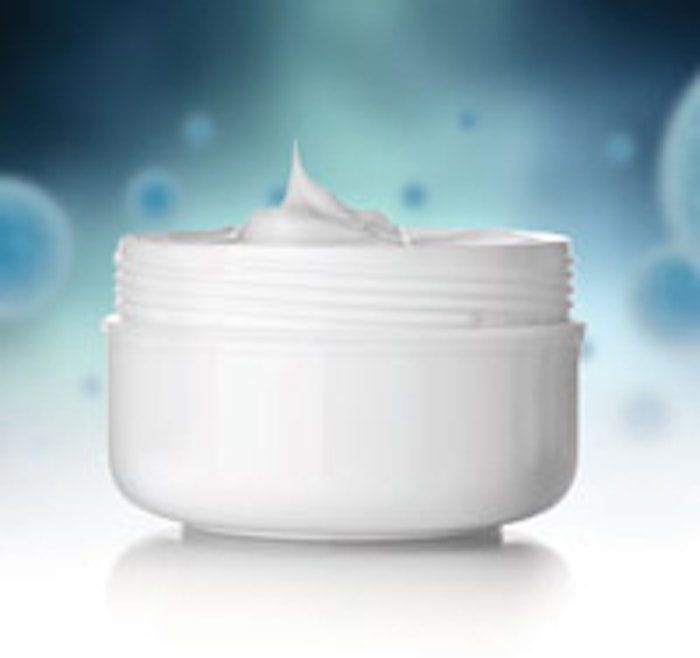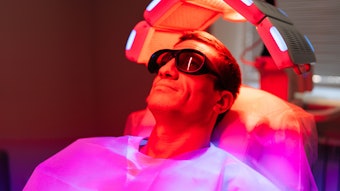
The skin is an intricate network of cells engaged in various levels of communication at all times. The most prevalent molecules responsible for this communication are cytokines. Cytokines are proteins, or peptides, that function as biological messengers.
For the skin care practitioner, this article is an introduction the concept of cellular communication, and specifically cytokines. Cell-to-cell communication is emerging as an exciting area in cosmetic product development. Peptides, stem cell technologies, botanicals, vitamins and even less active cosmetic ingredients all have the capacity to positively or negatively affect the skin.
Cytokines are water-soluble chemical compounds that are not stored in the body, but are made as needed for a particular function. There are three individual types of cytokines: autocrine, paracrine and endocrine. An autocrine acts on the cell that produces it. Paracrines act on nearby cells and endocrines act at a long-distance within the body.
About cytokines
Many cells in the body can make cytokines. Lymphokines were the first cytokines to be discovered. They are made by lymphocytes, and are now called interleukins. A great deal of excitement occurred with the discovery that a certain group of cytokines, called interferons, were able to inhibit the growth of viruses. It was found that there were good and bad types of cytokines. Throughout the years, cytokines were classified by their function, rather than their chemical structure. There are many classifications that you will find in medical literature, but these six classes cover most cytokines: growth factors, colony-stimulating factors, cytotoxins, suppressor or inhibitor factors, interleukins and interferon.
Keep in mind that whenever a cytokine is mentioned, it is a messenger that has a specific action on a cell. Many cell types produce and secrete a number of cytokines. In the bloodstream, B and T lymphocyte cells, monocytes and other lymphocytic series secrete a variety of cytokines. In the skin, keratinocytes and Langerhans cells also produce many types of cytokines. Skin care professionals are particularly interested in the cytokines produced by the keratinocytes—and there are quite a few. The keratinocyte can produce all of these interleukins: IL–1, IL-3, IL-6, IL-7, IL-8 and IL-10. In addition, keratinocytes can produce IFN beta and alpha, G-CSF, CSF and G-CSF, along with growth factors including fibroblast growth factor, or bFGF, EGF, KGF, GSA, NGF, TGF-α and -β, as well as PDGF. Let’s look at a few of these cytokines to see what they actually do, in scientific terms. Don’t be discouraged if you don’t grasp it all at once.
Transforming growth factor beta (TGF-β)
TGF-β is a protein that controls proliferation, cellular differentiation and other functions in most cells. It is a type of cytokine that plays a role in immunity, cancer, bronchial asthma, heart disease, diabetes and AIDS. TGF-β is secreted in at least three isoforms called TGF-β1, TGF-β2 and TGF-β3. TGF-β is part of a superfamily of proteins known as the TGF-β superfamily, which includes inhibins, activin, anti-müllerian hormone and bone morphogenetic protein. Most tissues have a high expression of TGF-β. Conversely, the anti-inflammatory cytokine IL-10 requires extracellular stimulation .
Some cells that secrete TGF-β also have receptors for TGF-β. This is known as autocrine signaling. Inflammatory stimuli that activate macrophages enhance the release of active TGF-β by promoting the activation of plasmin. Macrophages can also secrete endocytose IgG-bound latent TGF-β complexes that are secreted by plasma cells, and then release active TGF-β into the extracellular fluid.
All the functions of TGF-β are quite complex, but just remember that it is one of the good cytokines and performs important functions in the skin. It stimulates collagen and fibronectin synthesis. It is critical in cell chemotaxsis—the process of producing a chemical that attracts white cells to specific areas of the body—and it helps inhibit the breakdown of the intercellular matrix, which is a major factor in preventing the spread of cancer. Next, let’s examine a few of the interleukins produced by keratinocytes, starting with interleukin-1 and interleukin-3.
Interleukin 1 (IL-1)
IL-1 is a family of polypeptides, initially found to be produced by activated monocytes and macrophages that mediate a wide variety of cellular responses to injury and infection. Epidermal epithelial cells, keratinocytes, produce the epidermal, cell-derived thymocyte activating factor (ETAF), which has been recently shown to be identical to IL-1. The human epidermis is normally exposed to significant amounts of solar UV radiation. Human keratinocytes contain detectable amounts of IL-1 α and β mRNA and protein in the absence of apparent UV stimulation. Tissue culture studies of keratinocytes irradiated with UV light in the UVB range (290–320 nm) showed increased IL-1 activity by these cultures in vitro. The effect of UV irradiation on IL-1 represents a specific enhancement of IL-1 gene expression. Local increases of IL-1 may mediate the inflammation and vasodilation characteristic of acute UVB-injured skin. Systemic release of this epidermal IL-1 may account for fever, leukocytosis, and the acute phase response observed after excessive sun exposure.
You are probably familiar with the natural product azulene, which is a derivative of the chamomile plant. This is an effective anti-inflammatory agent that may inhibit IL-1 and NF-kB. In the category of new ingredients, Delisens, a hexapeptide by Lipotec, has been shown to inhibit IL-6 and IL-8, reducing inflammation. In a skin care formulation, it acts as an effective agent to ameliorate the discomfort of the nagging pain and itch occurring in sensitive skin.
Interleukin 3 (IL-3)
IL-3 is a cytokine that was initially shown to activate mast cells and induce the proliferation of hematopoietic stem cell lines. Human keratinocytes also have been shown to release an IL-3like cytokine, which enhances the activity of natural killer cells, and stimulates the release of oxygen radicals by granulocytes. However, human keratinocyte IL-3 appears to be distinct from T-cell IL-3. The exact nature of this cytokine remains to be clarified by sequence analysis and gene cloning. Through the production of these cytokines with IL-3like capacity, keratinocytes may participate in the regulation of the activity of different hematopoietic cells, thereby turning on early nonspecific host defense mechanisms against transformed cells and various harmful microbial organisms. These cytokines could be good guys or bad guys, depending on the biological circumstances.
Platelet-derived growth factor (PDGF)
PDGF was the first of the numerous growth factors identified that regulate cell growth and division. It has a significant role in blood vessel formation, called angiogenesis, and the growth of blood vessels from already-existing blood vessel tissue. Uncontrolled angiogenesis is characteristic of the prominent veins seen in rosacea clients. At the extreme, squamous and basal cell carcinoma are examples of excessive blood vessel growth. PDGF is a potent mitogen (causes cell division) for cells such as smooth muscle cells and glial cells, which arise from mesenchymal tissue. PDGF is synthesized, stored and released by platelets—small cells that are involved in blood-clotting—upon activation. This is where it derives its name; however, PDGF is produced by many types of cells, including smooth muscle cells, activated macrophages and endothelial cells. PDGF, along with certain other factors, is able to modulate the activity of epidermal growth factor, an important skin cytokine.
Epidermal growth factor (EGF)
Activation of EGF produces cellular proliferation, differentiation and cell survival. EGF is a low-molecular-weight polypeptide found in many human tissues, including the submandibular gland and the parotid gland. It is genetically engineered from a variety of bacterial organisms, which are killed, and the EGF is extracted. The biological effects of salivary EGF include healing of oral and gastroesophageal ulcers, inhibition of gastric acid secretion and stimulation of DNA synthesis. EGF in the saliva provides mucosal protection from intraluminal injurious factors, such as gastric acid, bile acids, pepsin and trypsin, as well as physical, chemical and bacterial agents.
EGF binds tightly to the epidermal growth factor receptor (EGFR) on the cell surface, stimulating the intrinsic protein tyrosine-kinase activity of the receptor. The tyrosine-kinase activity, in turn, initiates a signal transduction cascade that results in three main biochemical changes within the cell, which include a rise in intracellular calcium levels, increased glycolysis and protein synthesis. Increased tyrosine-kinase activity elevates the expression of certain genes, including the gene for EGFR that ultimately leads to DNA synthesis and cell proliferation.
The actions of cytokines
Let’s look now at what a few of these cytokines do. First, a definition the various types of inflammatory response.
- Acute inflammation is marked by the classical signs in which vascular and exudative processes predominate. It has a rapid onset and generally lasts less than two weeks. These cytokines are involved in acute inflammation: PDGF, VEGF, TNF, IL-1α, IL-1β, IL-6, IL-11, IL-16 and IL-8.
- Chronic inflammation is prolonged and persistent inflammation marked chiefly by new connective tissue formation. It may be a continuation of an acute form or a prolonged low-grade fever. Characterized by slow onset, it lasts at least a month. These cytokines are associated with the initiation and persistence of chronic inflammation: IL-2, IL-3, IL-6, IL-7, IL-8, IL-9 IL-12, IL-14, IL-15, TGA-α, TGF-β1 and TGF-β2.
- Subacute inflammation is an intermediate condition between chronic and acute inflammation, exhibiting some of the characteristics of each. It can last between three and four weeks. These cytokines are the good guys and are anti-inflammatory: TGF-β3, IL-4, IL-5, IL-10, IL-11, IL-13, IL-16, Wisp-2 and HGF.
Chronic Inflammatory disorder: psoriasis
Psoriasis affects approximately 2% of the population in the United States. The keratinocyte has been the object of intense study in the cause and treatment of psoriasis. It is well known that keratinocytes contribute to the skin immune response and are able to express a new cytokine known as IL-23. This cytokine is part of the interferon family. Studies have shown that very low levels of IL-23 were sufficient to increase the production of IFN gamma by T-cells. It was also noted that this cytokine would be fine in the dermal compartment. For many years, scientists have looked at the dermis for the origin of psoriasis. IL-23 may become an important target for therapeutic possibilities and psoriasis.
Improve skin aging
By understanding and incorporating the knowledge of cell communication and the use of cytokines, the opportunities for cosmetic formulators become very exciting. The practitioner need not master all of the information presented here. It is important to know this is an area of expansion into a higher level of cosmetic chemistry. One esthetic application to take away related to cytokine processes is the use of topical products on aging skin that has been damaged by destruction to the collagen. It has been shown that regular use of a product formulated with effective peptides can markedly improve aging skin’s appearance. One material, Telangyn by Lipotec, a tetrapeptide, has demonstrated a statistically significant effect on collagenase, stimulating a positive anti-inflammatory response and reducing redness. In the coming years, the impact of an increased understanding of scientific processes within the skin will bring sophisticated new formulations that provide visible and lasting benefits to clients.
GENERAL REFERENCES
JG Hardman, LE Limbird and AG Gilman, Goodman & Gilman’s The Pharmacological Basis of Therapeutics McGraw-Hill, New York (2001)
SL Kunkel and DG Remick, Cytokines in Health and Disease, Marcel Dekker, New York (1992)
JI Gallin, IM Goldstein, and R Snyderman, Inflammation: Basic Principles and Clinical Correlates, Raven Press, New York (1992)
G Blobe, WP Schiemann and HF. Lodish, Role of Transforming Growth Factor β in Human Disease N Engl J Med 342 1350–1358 (May 2000)
TS Kupper, et al., Interleukin 1 gene expression in cultured human keratinocytes is augmented by ultraviolet irradiation J Clin Invest 80 2 430–436 (Aug 1987)
TA Luger, et al., Keratinocyte-derived interleukin 3 Ann N Y Acad Sci 548 253–261 (1988)
S Zampieri, et al., Tumour necrosis factor α is expressed in refractory skin lesions from patients with subacute cutaneous lupus erythematosus Ann Rheum Dis 65 4 545–548 (April 2006)
G Piskin, et al., In vitro and in situ expression of IL-23 by keratinocytes in healthy skin and psoriasis lesions: enhanced expression in psoriatic skin J Immunol 1 176 3 1908–1915 (Feb 2006)













